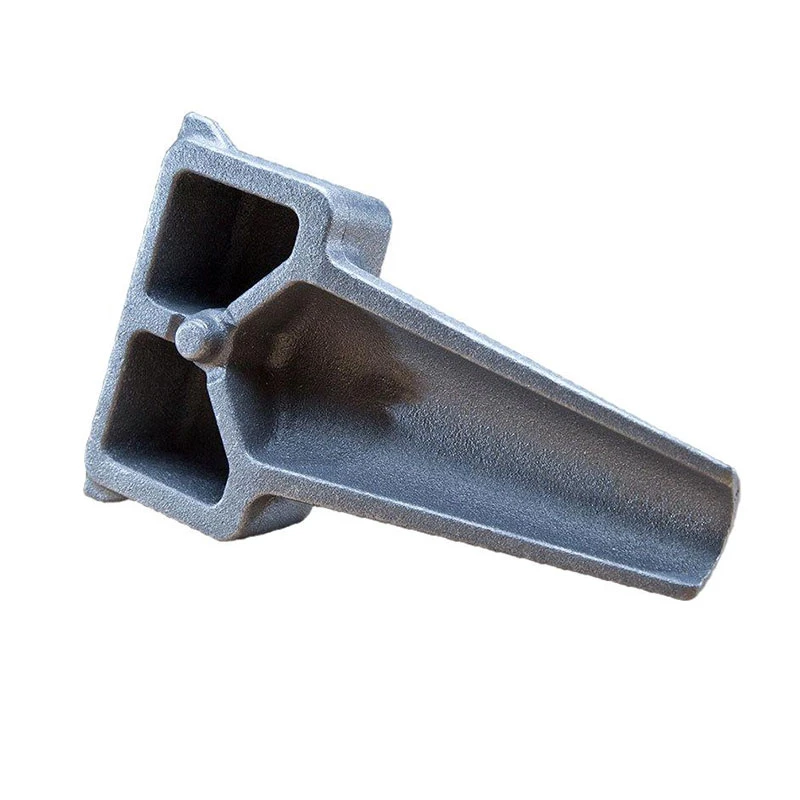Understanding the Process and Applications of Metal Stamping in Modern Manufacturing
Understanding Metal Stamped Parts A Comprehensive Overview
Metal stamping is a versatile manufacturing process used to create complex parts with precise dimensions and intricate designs from metal sheets. The technique utilizes a variety of tools and machinery to cut, shape, and finish metal materials in high volumes, making it an integral part of various industries, including automotive, aerospace, electronics, and consumer goods. In this article, we will delve into the significance of metal stamped parts, the processes involved, benefits, applications, and future trends in the industry.
The Metal Stamping Process
The metal stamping process begins with selecting the appropriate type of metal, which can range from aluminum and stainless steel to brass and copper, depending on the intended use of the final product. The metal sheet is then fed into a stamping press, where a die, which is a specialized tool designed for shaping metal, performs various operations. These operations may include cutting, bending, and forming the metal into the desired shape.
Metal stamping can be categorized into several types
1. Blanking This process involves cutting flat shapes from the metal sheet. The punched-out pieces are referred to as blanks and serve as the starting point for more intricate designs.
2. Punching Similar to blanking, punching creates holes or cutouts in the metal sheet. These punched-out pieces can either be discarded or become components of the final part.
3. Bending This operation involves deforming the metal along a straight axis to achieve the desired angle or shape, essential for creating parts that fit together in assemblies.
4. Forming This broader category involves shaping the metal into complex three-dimensional forms, which is particularly useful for parts that require specific contours or configurations, such as brackets or brackets.
Advantages of Metal Stamped Parts
Metal stamping offers several advantages that make it a preferred choice in manufacturing
- Precision The dies used in stamping are designed for accuracy, providing consistent quality and dimensional tolerance across large production runs
.metal stamped part

- Cost-effectiveness Once the initial tooling is created, metal stamping is highly economical for mass production, reducing per-unit costs significantly.
- Speed The stamping process can produce parts at high speeds, which is essential for meeting market demands and keeping production lines efficient.
- Material efficiency Metal stamping minimizes waste by utilizing the metal sheet effectively, allowing for maximum use of raw materials.
- Versatility The process can accommodate a wide range of materials and thicknesses, making it suitable for diverse applications.
Applications of Metal Stamped Parts
The applications of metal stamped parts are vast and varied. In the automotive industry, metal stamping is used to manufacture components such as brackets, chassis, and panels. In aerospace, stamped parts are integral for creating structural components and various fixtures that require high precision and durability. Electronics utilize metal stamped parts for creating housings and connectors essential for electronic devices. Additionally, consumer goods such as kitchen appliances and furniture often incorporate metal stamped components for both functionality and aesthetic appeal.
Future Trends in Metal Stamping
As technology continues to evolve, the metal stamping industry is witnessing significant advancements. Automation and robotics are increasingly being integrated into stamping processes, enhancing production efficiency and safety. Innovations in materials science are leading to the development of lighter, stronger alloys that can withstand rigorous use while reducing overall weight.
Moreover, the incorporation of additive manufacturing techniques is expected to revolutionize the design and production of stamping dies, allowing for more complex shapes and reduced lead times. Sustainability is also becoming a priority, with a focus on using recyclable materials and reducing energy consumption throughout the stamping process.
Conclusion
Metal stamped parts are foundational elements in numerous industries, providing the framework for innovation and functionality in modern products. The efficiency, precision, and versatility of metal stamping make it indispensable in manufacturing. As technology advances and the demand for high-quality, low-cost components continues to grow, the metal stamping industry is poised for significant growth and transformation. Understanding the processes and applications of metal stamped parts is crucial for engineers and manufacturers aiming to leverage this essential manufacturing technique for future developments.
-
OEM Sand Cast Pump Valve Fittings - Baoding Hairun | Precision Engineering, CustomizableNewsJul.30,2025
-
OEM Sand Cast Pump Valve Fittings - Baoding Hairun Machinery And Equipment Trading Co., Ltd.NewsJul.30,2025
-
OEM Sand Cast Pump Valve Fittings - Baoding Hairun Machinery And Equipment Trading Co., Ltd.NewsJul.30,2025
-
OEM Sand Cast Pump Valve Fittings - Baoding Hairun Machinery|Precision Engineering&Fluid ControlNewsJul.30,2025
-
OEM Sand Cast Pump Valve Fittings - Baoding Hairun Machinery And Equipment Trading Co., Ltd.NewsJul.30,2025
-
OEM Sand Cast Pump Valve Fittings-Baoding Hairun Machinery And Equipment Trading Co., Ltd.NewsJul.30,2025















